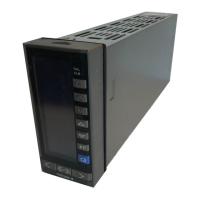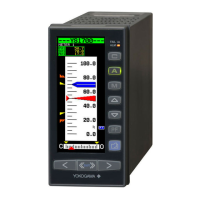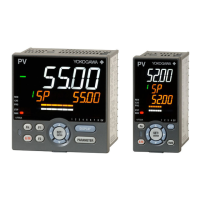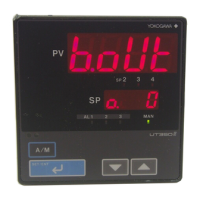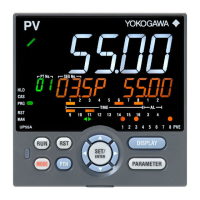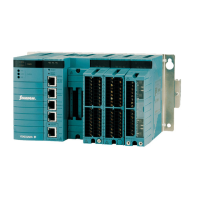42
IM 01B08B02-01EN
42
Installation and Wiring
For the following, see the YS1000 Series Replacement Manual.
• Installation and wiring for YS1500/YS1700-2, -3, -4, and -5
• Connection of the RJC sensor provided with the product with optional code /A02
Installation Location
WARNING
For products with optional code /FM or /CSA:
1) Devices must be installed by professionally trained personnel.
2) In case of option code /FM, install devices according to NEC (National Electrical Code: ANSI/NFPA-70).
In case of option code /CSA, all wiring shall comply with Canadian Electrical Code Part I and local electrical codes.
The instrument should be installed in indoor locations meeting the following conditions:
• Instrumented panel
This instrument is designed to be mounted in an instrumented panel. Mount the instrument in a location where its terminals will not
inadvertently be touched.
• Well ventilated locations
Mount the instrument in well ventilated locations to prevent the instrument’s internal temperature from rising. To mount multiple
indicating controllers, see the external dimensions/panel cutout dimensions which follow. If mounting other instruments adjacent
to the instrument, comply with these panel cutout dimensions to provide sufficient clearance between the instruments.
• Locations with little mechanical vibration
Install the instrument in a location subject to little mechanical vibration.
• Horizontallocation
Mount the instrument horizontally and ensure that it is level, with no inclination to the right or left.
Note
If the instrument is moved from a location with low temperature and low humidity to a place with high temperature and high
humidity, or if the temperature changes rapidly, condensation will result. Moreover, in the case of thermocouple inputs,
measurement errors will result. To avoid such a situation, leave the instrument in the new environment under ambient conditions
for more than 1 hour prior to using it.
Do not mount the instrument in the following locations:
• Outdoors
• Locations subject to direct sunlight or close to a heater
Install the instrument in a location with stable temperatures that remain close to an average temperature of 23°C. Do not mount it
in locations subject to direct sunlight or close to a heater. Doing so adversely affects the internal unit.
• Locations with substantial amounts of oily fumes, steam, dust, or corrosive gases
The presence of oily fumes, steam, dust, or corrosive gases adversely affects the instrument. Do not mount the instrument in
locations subject to any of these substances.
• Areas near electromagnetic field generating sources
Do not place magnets or tools that generate magnetism near the instrument. If the instrument is used in locations close to a strong
electromagnetic field generating source, the magnetic field may cause measurement errors.
• Locations where the display is difficult to see
The instrument uses an LCD for the display unit, and this can be difficult to see from extremely oblique angles. Mount the instrument
in a location where it can be seen as much as possible from the front.
• Areas close to flammable articles
Absolutely do not place the instrument directly on flammable surfaces. If such a circumstance is unavoidable and the instrument
must be placed close to a flammable item, provide a shield for it made of 1.43 mm thick plated steel or 1.6 mm thick unplated steel
with a space of at least 150 mm between it and the instrument on the top, bottom and sides.
• Areas subject to being splashed with water
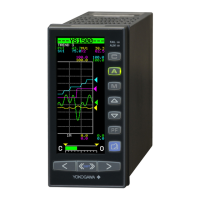
